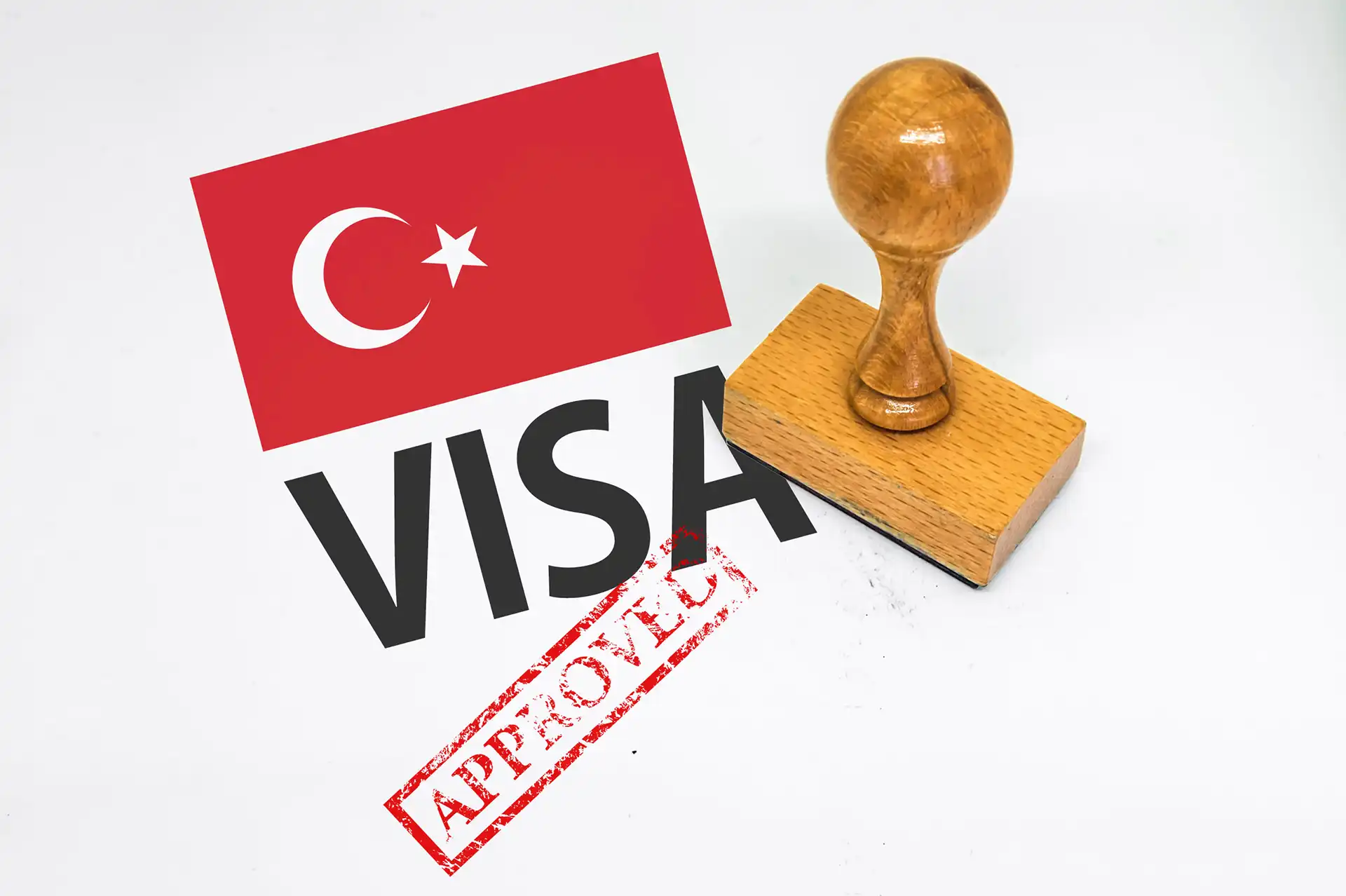
Denmark Visa
Traveling to Denmark
The smallest Scandinavian country, Denmark is nevertheless the most popular with tourists. Most come to Copenhagen—the country’s seaside capital—an epicenter of groundbreaking Nordic cuisine and cutting-edge architecture.
You may need a visa to travel to Denmark, depending on where you are from (nationality), the length of your trip (duration of stay), and your reason for travel (type of visa needed).
There are numerous types of visas for Denmark, which are valid for travel for specific purposes and times. Different Danish visas have different Denmark visa requirements and validity periods. In general, Danish visas can be divided into two main categories: short stay visas and long stay visas (a long stay visa for Denmark is required for those looking to spend more than 90 days in the country). Another main distinction relates to allowed entries: a single entry will allow you just one entry into the country; a multiple entry visa for Denmark will let you enter and exit as many times as needed.
Denmark visa types
Schengen Visas
- Business
- Cultural
- Medical
- Official Visit
- Other
- Sports
- Study
- Tourism (Denmark Tourist visa)
- Visiting Family or Friends
Long Term Visas (Type D, National)
- Job seeker visa
- Long term visiting visa
- Visa for collection of Danish Residence Permit
- Working Holiday Program visa
Transit Visa (Type A)
- Denmark Airport Transit visa
Denmark visa requirements
The following documents are typically required for all visas to Denmark.
Passport
Official, government-issued document, not older than 10 years, with the correct validity length (a minimum three months past the intended day of exit from Denmark)
Visa fee
Your Denmark visa fee will depend on the type of visa you are applying for, and possibly other factors, such as your age. Most adult applicants pay 80 EUR for a Schengen visa; national visas may be 242 EUR.
Personal photos
Two recently taken photos of the applicant. Photos should be passport style (and have passport dimensions). You will likely upload these photos electronically; alternatively, you will be asked to submit physical copies
Additional documents:
You will almost certainly have to submit additional documents on your Danish visa application. Requested documents are typically those which help visa authorities confirm your identity, determine the truthfulness of your stated purpose of travel, and assess your financial state. The type of Danish visa you apply for will determine your supplemental documents, which may include the following:
Biographical documents
Identity documents, such as your birth certificate
Financial materials
Documents showing your finances, such as your bank balance
Accommodation
Information about where you will stay in Denmark
Educational materials
Proof of university education, etc.
Proof of medical insurance
Please note that all documents may likely need to be written in either Danish or English (or accompanied by official translations into either).
Denmark visa application
Applicants for Danish visas should follow these general steps, which may vary slightly depending on numerous factors, including visa type and application destination.
- Prepare your visa application
Choose your visa duration
Determine how long you intend to be in Denmark—i.e. what type of Danish visa you need: long, short, or airport. This will determine how you proceed with the subsequent application steps.
Select your Danish visa purpose
Choose your reason for travel (education, business, etc.)
Select your entry category
Your selection of the single-entry visa for Denmark or the multiple entry visa for Denmark will determine whether or not you may travel in and out of the country/Schengen area throughout your visa period. Consider that holders of the single-entry visa for Denmark cannot return to the country after exiting.
Determine where to apply
Find your physical application destination (place where you will submit your visa application). This is typically the Danish Embassy/Consulate or associated visa-application center where you live. For more information, see “where to apply.” - Fill out your visa application
Access your main application form
Most applicants should apply for their Danish visa online, through the official visa portal system. If you are unable to access the online form due to your application destination, you will likely apply directly through your local Danish mission. Regardless of how you apply (online or in person) you will typically need to officially submit your application through your local Danish application destination in order to fulfill various in-person requirements.
Gather the rest of your documents
Gather your required documents as well as the supplemental ones required for your specific Danish visa type. - Pay your Denmark visa fee
Depending on the type of visa you are applying for, you may be able to pay for your visa at this stage of the application (online). Alternatively, you will be asked to submit payment at step 4 (your visa interview).
- Schedule your visa interview
Almost all Danish visa applicants, even those who apply online, must attend a visa appointment at their application. Scheduling a Danish visa interview can take days, weeks, or even months—if you apply through the Danish visa portal, you should be able to schedule your interview online. Alternatively, you may need to reach out to the embassy/consulate/visa application center directly (via email/phone) to make an appointment.
- Attend your visa interview
This is where you will submit your biometric information, be interviewed, and meet other requirements pertaining to your visa type. This is typically the final stage of the Denmark visa application process; you will either be granted a visa upon the conclusion of your appointment, receive a rejection, or leave to await a decision.
Please note that certain visas may require subsequent steps (for example, if you are applying for a long term Denmark Business visa or Denmark Working visa you may need to apply for Denmark Work Permit—other long term visas may require you to apply for a residence permit for Denmark. For more information about whether your Denmark Working visa application or Portugal Business visa application will subsequently require you to seek a Denmark Work Permit or a residence permit for Denmark, make sure to research the specific visa requirements for your specific visa type.
Where to apply for Denmark visa
Denmark visa application processing occurs at Danish embassies and consulates (and their associated visa application centers) around the world. Depending on the type of Danish visa you seek, you may be able to apply online (the Denmark Schengen visa application—for example—is online). However, even online applicants must fulfill the in-person Denmark visa requirements, which can only be fulfilled at physical Danish embassies/consulates and visa application centers. If you are outside of Denmark and are applying for a Denmark visa, you will apply through the Danish embassy/consulate or visa application center where you live.
When to apply for a Denmark Visa
Applicants for short-stay visas to Denmark are advised to submit their application a minimum of fourteen days before their intended trip. And while applying well in advance is recommended, applying too early (i.e. over six months before departure) is discouraged.
Denmark visa processing time
The Denmark visa application processing time varies. Factors which determine how long it will take to get your visa include the following:
- Danish visa type
- Application destination
- Your nationality
- The completeness of application
Depending on all of these factors, you could expect to receive a visa in days, weeks, or even months after you apply.
Denmark visa FAQ
Depending on where you are from, you may need a visa to enter the country, regardless of how long you intend to stay. Some nationalities do not need a visa to travel to Denmark. Regardless of your nationality, however, you will need a visa if you intend to stay in the country longer than 90 days and you are not an EU/EEA/Swiss citizen.
Get a travel document for Denmark (visa) by submitting an application to your local Danish embassy/consulate/visa application center, meeting the visa requirements, and paying your visa fee.
The amount of money you need depends on the Schengen country you are visiting. You will likely need to show several months proof of salary/bank statements in order to meet the Schengen proof of funds requirement.
Choose from among the various types of Denmark visa you need to apply for by considering your reason for travel and how long you want to stay in the country. These factors will determine the type of visa you need. In addition to visa type, you should also determine how many entries you need—i.e. whether you need a multiple entry visa for Denmark or a single entry visa for Denmark.
Rejected Schengen visa applicants can appeal the decision, reapply, or apply for another travel document for Denmark (different Danish visa, such as a Denmark Tourist visa).


